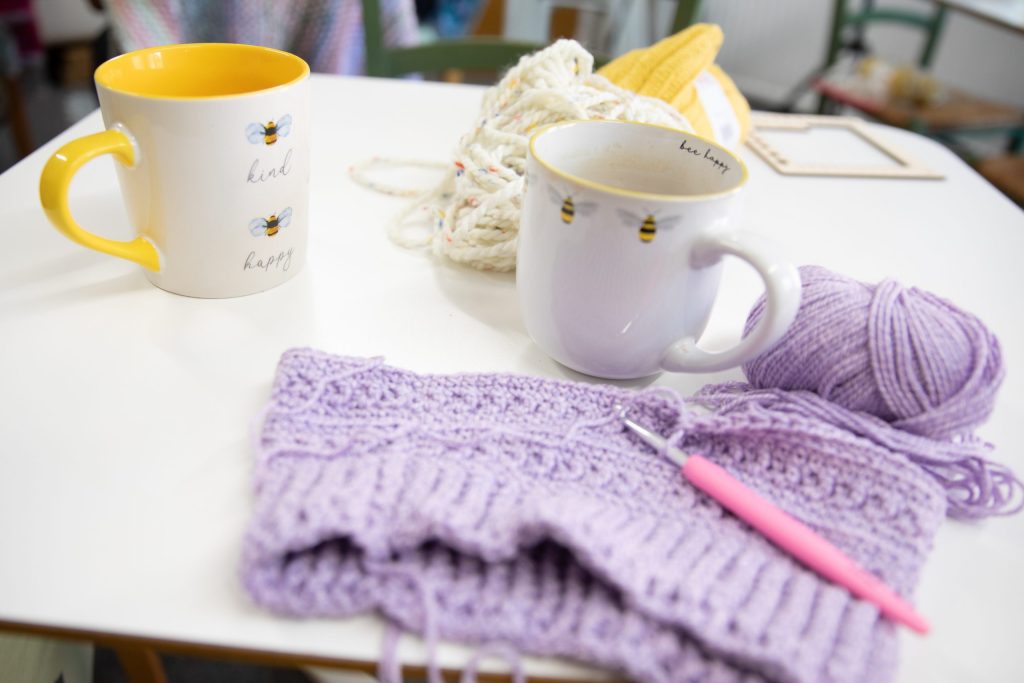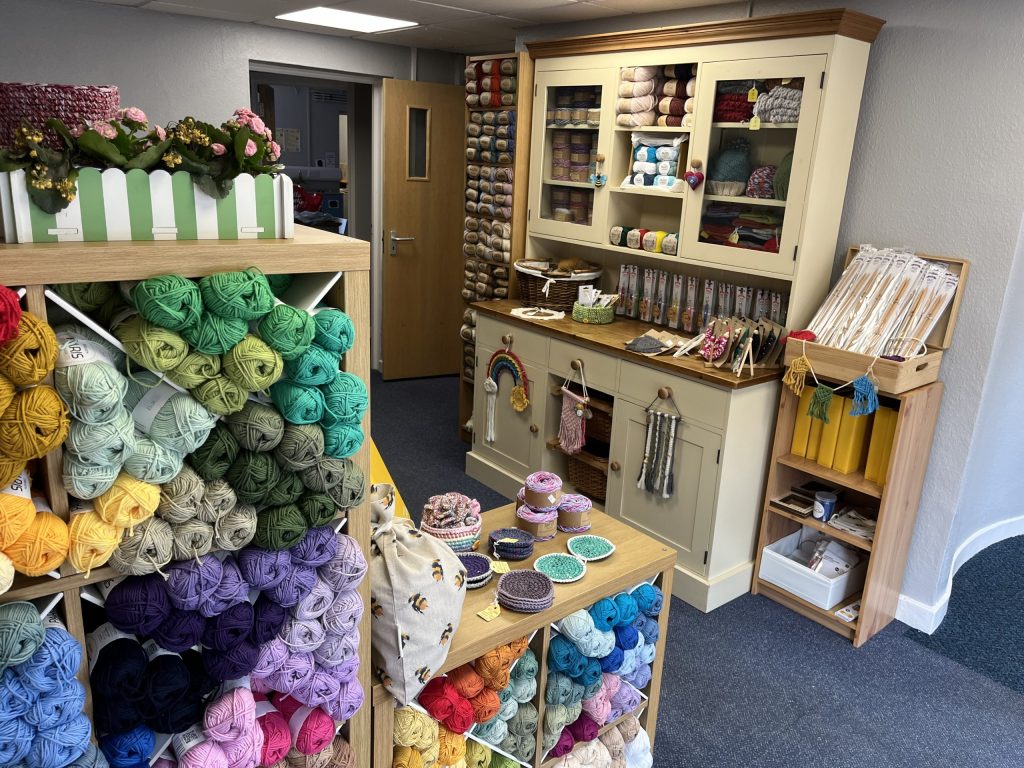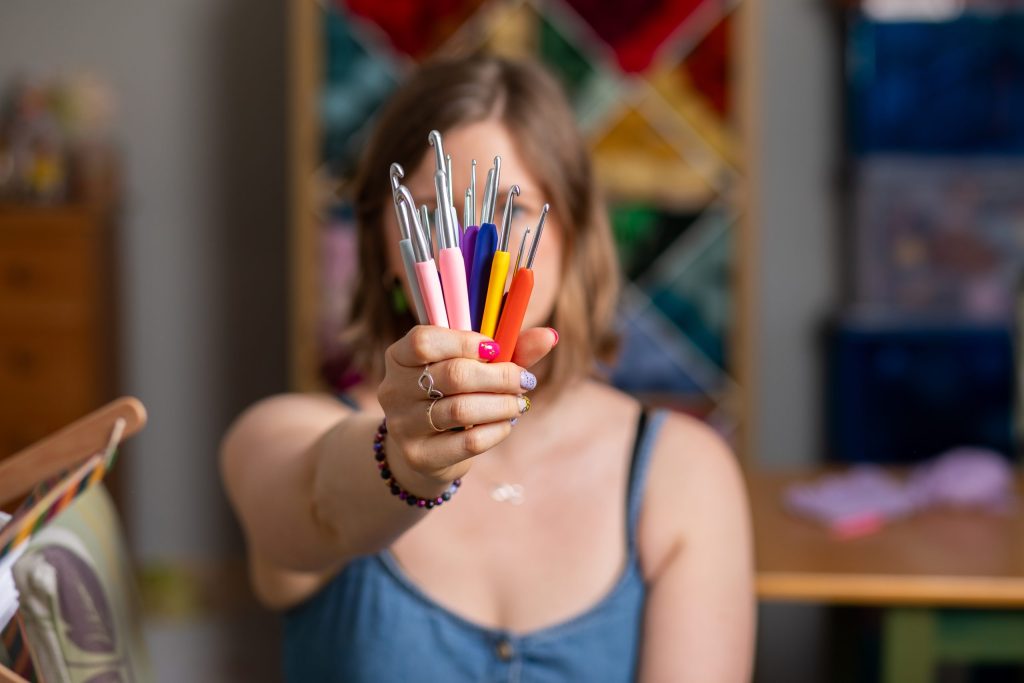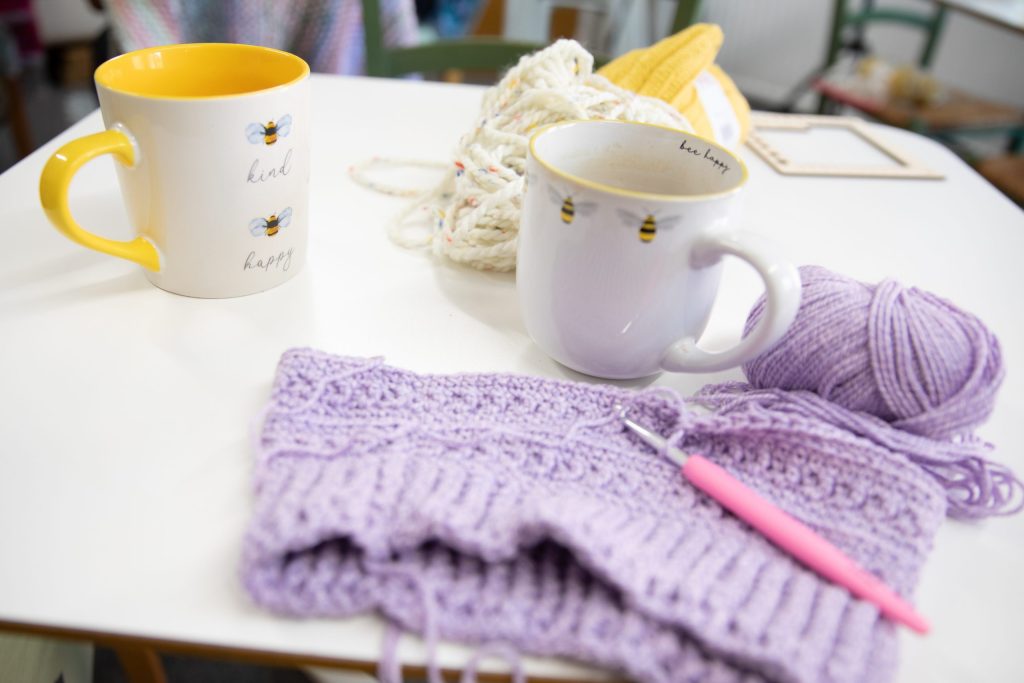As you’ll know by now, crochet is very versatile and also conveniently portable. Now that you’ve mastered the basics, there’s a whole range of more complex projects available to you – but where do you start?

Here are my top ten tips – in no particular order:
- Join a crochet class aimed at craft lovers who want to develop their crochet skills. There are classes available in-person and online. This will enable you to learn alongside others who are working on the same projects and to get direct support from a more experienced crocheter/crochet teacher, to help you to develop your skills.
- Join a local needlecraft group. As well as it being a social activity with like-minded people, you are also likely to find support, ideas for new creations and pattern recommendations.
- As you increase your skills and confidence and begin to tackle more complex projects, you will need to have a wider range of hooks, needles, yarn and patterns. Choose carefully, as it can be easy to be lured in by the number of tools and gadgets listed as ‘must-have’ items. It’s worth taking your time and asking for expert advice on which tools and yarn to choose for your project.
- Pom-pom makers are a huge time saver and very easy to use. I create a lot of items for sale and I consider pom-pom makers as an essential for me with my business. Needle threaders and stitch counters are inexpensive and could help to save you time and effort.
- Using a swift and winder reduces the risk of knots and is great for mindfulness and fun – it’s my favourite luxury item.
‘Using a yarn winder and swift is the easiest way to wind up a skein of yarn. These tools help to wind the yarn into a center-pull ball, which sits flat to make it easy to work with.’ The Creative Folk - Challenge yourself to create your own designs and write down the pattern, so you can come back to it again later. I love creating new patterns and experimenting with colour too.
- Think about a purpose for your projects. Crochet can be used for making: –
- clothing – eg. jumpers, tops, dresses, cardigans or hats
- decorations – eg. table decorations or wall decorations
- other useful items – eg. blankets, duvet covers, cushion covers, table mats or bags
Consider who you can gift items to, or whether you would like to use your skills to create additional income for yourself.
- Keep the tension of your stitches even. This is particularly important when creating items of clothing, or other items with more than one side, such as cushion covers.
- Keep a craft journal, with all of your projects in it. It’s great to look back on and it will also allow you to easily keep track of where you are up to, especially if you are working on more than one needlecraft project at a time. I’ve created a Yarny Bees Craft Journal, designed for beginners and advanced crafters and it’s available from my in-person shop and my website.
- Remember that yarncraft is fun – take time to enjoy the creativity, mindfulness and flow that it offers.

In my shop in Lichfield and online too, I sell a range of knitted and crocheted items, yarn, needles, hooks and patterns. I also offer in-person and online workshops and groups, for adults and for children. You can find more information about these on my website:
References
‘7 Best Yarn Winders And Swifts of 2022’ The Creative Folk, by Emily, January 2021


